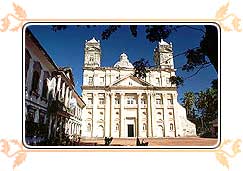About Catholic Pilgrimages
Christianity has had long and glorious relations with India. According to the legends, St. Thomas took a holy christian cruises and sailed to India from Eastern Asia in AD 52. He spent 12 years in India, the last eight of his life in Mylapore in Madras (now Chennai). Several shrines have been created in the places associated with him. Apart from this, the advent of Europeans in India from the 15th century onwards led to the mass influx of Christians and subsequent development of Christian pilgrimage sites. Some of the churches of colonial India are comparable to the best in the world and are as much a part of the heritage of India as its ancient temples. You must visit these churches and explore the fascinating world of Christian pilgrimage in India.

Christian Tours Significance
Catholic travel is an important part of spiritual life for many Christians. Christians see life itself as a journey, coming from God and returning to God. The pilgrim seeks to separate himself from the everyday concerns of the world, and to spend time in the presence of God as he travels to a place of special meaning. Christian pilgrimage tours is a symbol that is acted out. Back in the Middle Ages pilgrimages were very popular. Pilgrimage was long and very dangerous - not at all like a holiday! It may have taken many years. The pilgrims would usually travel in groups, take tough Christian pilgrimage routes and stay in monasteries or inns overnight.
Christian Pilgrimage Sites In India
People went on pilgrimage for many reasons - perhaps to say sorry to God for something they had done wrong (penance), or because they were ill and wanted God to heal them. How do people decide where to go on Catholic pilgrimage tours Over the years, places have become special for different reasons, and Pilgrims decide to visit these sacred Christian pilgrimage holy land to become closer to God in these special places.